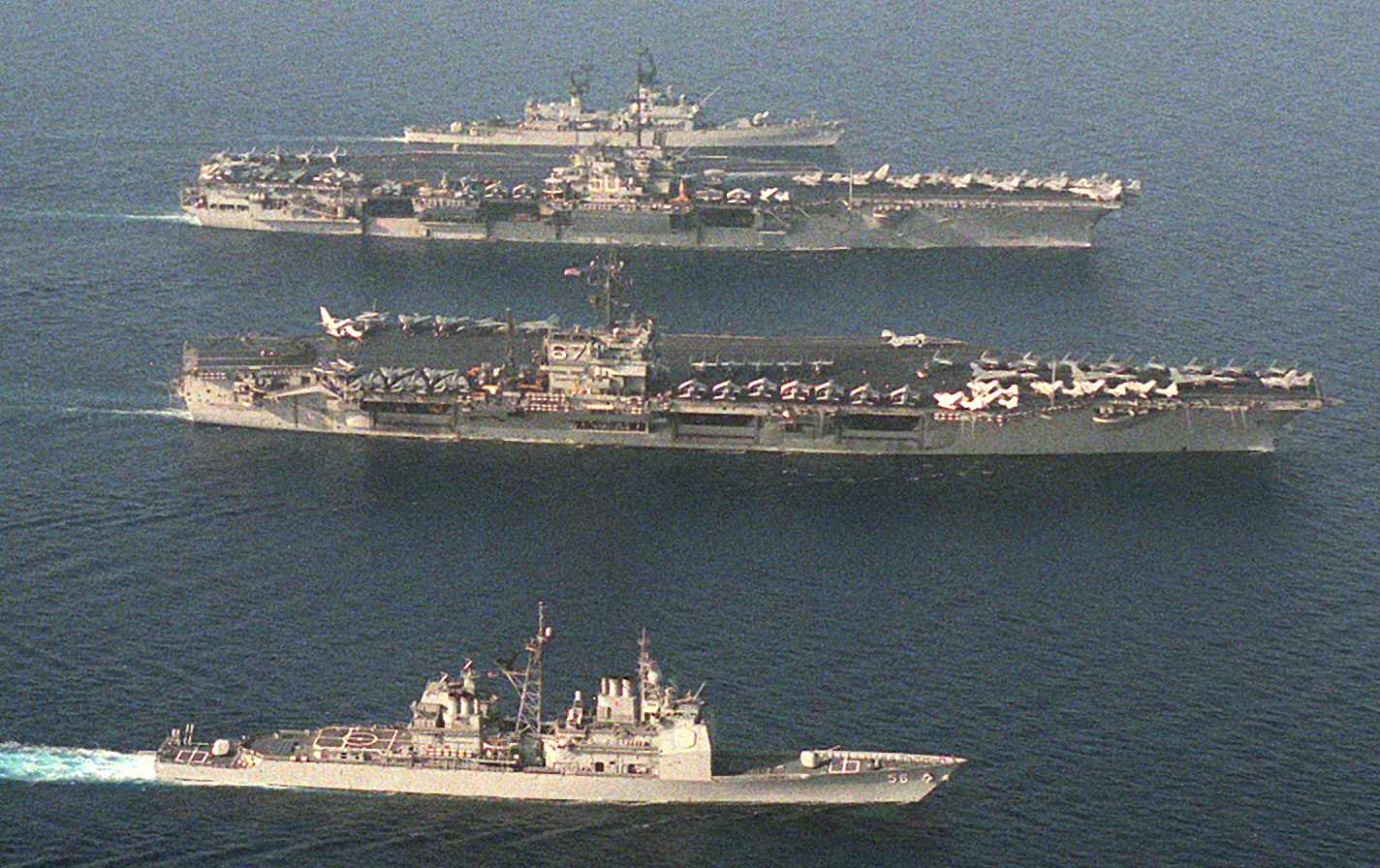The British, Royal Navy, are the ones who thought up the angled flight deck approach to CV design and it resulted in added flexibility in flight operations on the carrier decks.

en.wikipedia.org

en.wikipedia.org
This photo shows an aircraft carrier of the same class(type) as shown in post above, but with an enlarged flight deck modification know as the angled flight deck (@ 1962). We see two aircraft in the forward area about to use the catapults to launch, with others waiting to the rear. Notice the black and white coloring of the rear area. This shows a landing deck where the aircraft will come towards the ship slightly to the right side and moving slightly towards the left side, an angle crossing diagonal to the length of the ship.
(Also the rear elevator has been shifted to just astern of the Island, structure on the right/starboard side.)
With the old style of the straight flight deck, if there were no aircraft on the forward part of the deck, an airplane missing the arrestor wires with it's tailhook could just run down the deck, and take off for another try. But in a combat situation where you might have say 40 aircraft returning from a mission and running low on fuel, you need to get them to land as quick as you can. So as the planes landed they would be pushed forward and packed in on the bow until all had landed. In case there might be a miss of the wires, there was usually a net or two stung across the deck in the mid length to catch the plane that missed hooking the wire. Usually this worked, but on occasion the aircraft might have too much momentum and would plow through the net into the pack of aircraft on the bow.
The angled landing area at the rear of the flight deck solved this problem, and another one. As aircraft became jet powered and heavier, needing faster landing speeds, the straight deck with safety net began to see too many failures with crashes and aircraft destruction, and pilot/crew injuries/deaths.
With the angled deck for landing, if the aircraft missed hooking the wire, it goes off over the side. However, procedure is for it not to plunge into the sea doing such. So the modern approach has the jet aircraft coming down a bit faster than usual landing speed. If the hook snags the arrestor wire (there are about 5-6 for it to grab) the pilot cuts the throttle and applies the brakes, QUICKLY! If the hook fails to grab a wire, then the pilot jams the throttle full ahead and takes off the runway/deck - ideally.
I'm making it sound a bit more simple than it is. Landing speed varies based upon aircraft type, and it requires high alertness and training for the pilot to either successfully hook a wire and land, or bolt off the deck for a go around try.
So answer to your last question, with a straight flight deck design CV, one lands and takes off with the long axis of the ship, into the wind, and dead on same heading/direction.
With the angled flight deck design, one takes off straight in line with ship movement, but lands coming in at an angle to the motion of the ship. Aiming for that center white line.
Also, modern angle deck CV will have a third and/or fourth catapult in stern landing area pointing nearly straight towards front/bow of the ship allowing for 3-4 aircraft launches in quick order. Alternatively, if the deck isn't too crowded with parked planes, the carrier could be launching off the bow and taking landings on the stern at the same times.






